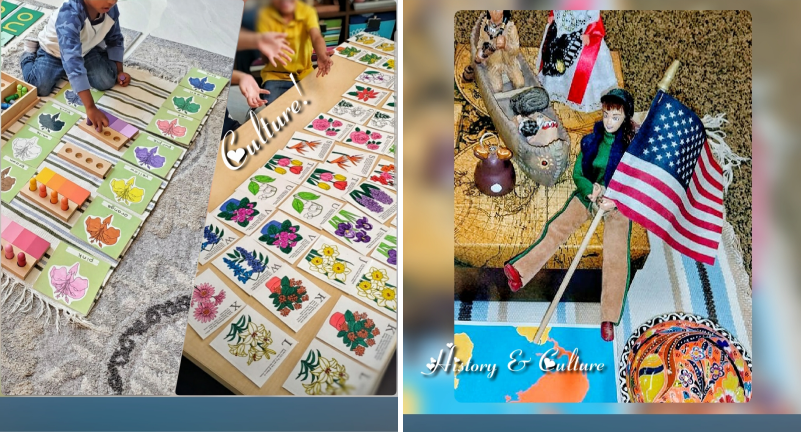Our Programs
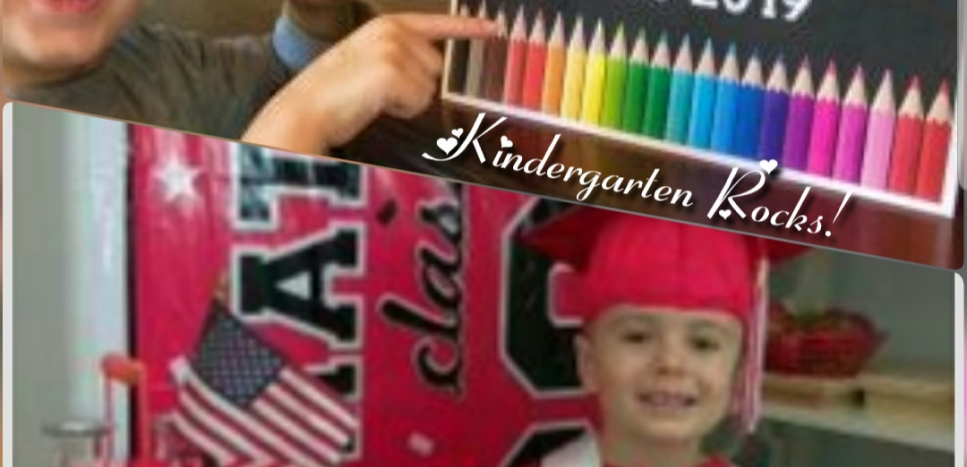
Primary
Our school offers a unique and educated aged-mixed group program in a friendly environment for 2.5 – 6 years old:
1. Children age 2.5 – 5 (pre_ k level)
2. Children age 5-6 (Kindergarten level)
Children in our primary program engage in individual learning experiences. Our goals for our students are:
- Encourage a positive attitude toward learning
- Build a strong foundation for future growth
- Introduce the children to the joy of learning
- Develop initiative
- Direct and assist each child to develop self-confidence
- Foster inner security and sense of order
- Provide skill in handwriting
- Help the child for grasping the meaning of words and ideas to read effectively with more confident
- Help each child to develop socially
- Help each child to develop skills and ideas
- Help each child to develop specific skills through Cultural Studies
- Help each child to understand and appreciate humanity’s role in comprehending the universe
TEACHERS
Teachers plan daily lesson on a daily basis. They create a well prepared Montessori environment and a atmosphere of learning to move students from one activity and level to the next. Teachers are the dynamic link between children and the prepared environment where they actively engaging children in the learning process and enhancing critical thinking skills.

THE FIVE(5) KEYS OF LEARNING IN THE MONTESSORI ENVIRONMENT:
The five key areas of learning in the Montessori environment include; Practical Life, Sensorial, Language, Mathematics, and Culture( History, Geography, Art and Music).
PRACTICAL LIFE
Practical life are exercises so the child can learn how to do living activities in a purposeful way in friendly environment.
Children are naturally interested in activities they have witnessed. Therefore, Dr. Montessori began using what she called “Practical Life Exercises” to allow the child to do activities of “daily life” and therefore adapt and orientate himself in his society with full confidence.
Practical life in Montessori is purposeful activity, develops motor control and coordination, and develops independence, order, discipline, concentration, and a sense of responsibility.
The exercises in practical life are the followings:
- 1Care of Self (dressing, eating, food preparation, etc)
- 2Grace and Courtesy (communication, greetings, social interactions, mannars, respect, discipline, etc)
- 3Care of Environment (dusting, washing, cleaning, gardening, etc)
- 4Control of Movement (Silence Game & body coordination, movement and control)
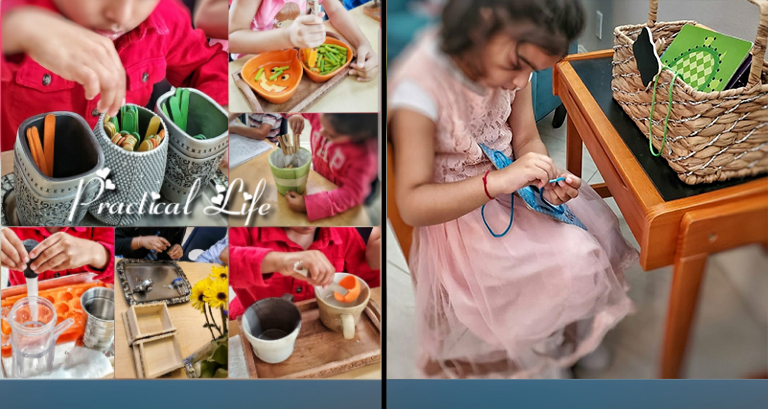
SENSORIAL
Sensorial materials help children become more logical, perceptive, and aware. Children also learn about the world around them through their five senses.
Sensorial activities allows the child to refine each of their senses:
- 1Sight (magnets, etc.)
- 2Smell (smelling bottles, etc.)
- 3Touch (touching Board, etc.)
- 4Taste (tating botthles, etc.)
- 5Sound (sound cylinders, etc.)
Sensorial designed Materials refine fine motor skills, visual and auditory senses and develops coordination and the ability to order and classify. Materials include Pink Tower, Brown Stairs, Knobbed Cylinders, Color Tablets, etc.
The sensorial area is also the preparation for “mathematics” and “logical thinking”.
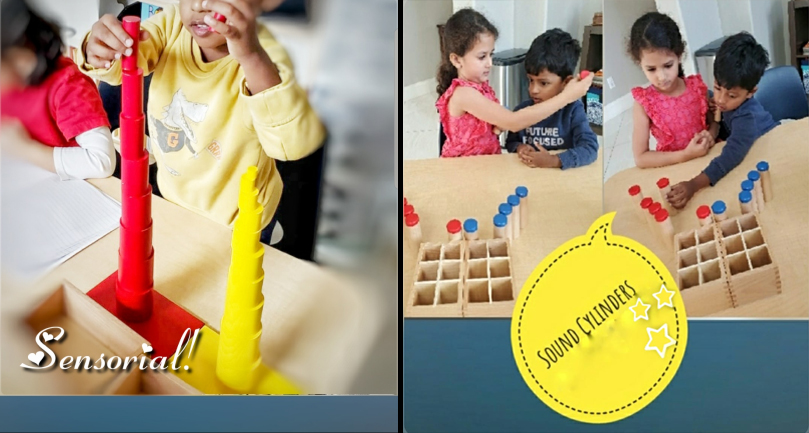
LANGUAGE
Language is based on phonetic awareness. Children work through specific hands-on and tactile language materials such as the sandpaper letters to the moveable alphabets and grammar cards & symbols.
The Language Area in the Montessori Primary environment is consisting of word study, function of words, vocabulary, journal writing, classification and reading which helps the child with many forms of language and provides the child to communicate and gain more confident.
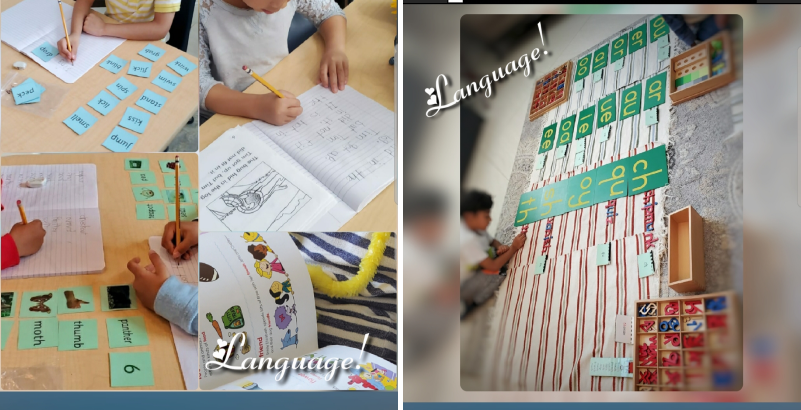
MATHEMATICS
Mathematics is developed with the use of concrete learning and hands-on materials such as: number rods, sandpaper numbers, number boards(teen & ten), spindle box, number tiles (hundred board), colored beads, and games. Each exercise builds upon another and the child gradually moves to from concrete to abstract areas such as place value, addition, subtraction, multiplication, and fractions.

CULTURAL
Culture allows the child to explore the natural world around them and includes:
Geography (seven continents, solar system, universe, land formations, flags, weather conditions, etc.)
Botany (classification and study of plants, trees and leaves)
Zoology (classification and study of animals and animal life)
Botany (classification and study of plants, trees and leaves)
History (calander, famous buildings, celebrations, time lines, vendors, artists, etc.)
Science (experiments)
Art & Music (creativity, weekly theme, globes, flags, puzzle maps, instruments, etc.)
These two categories could be considered cultural activities. However, creativity is encouraged across all curriculum areas.
